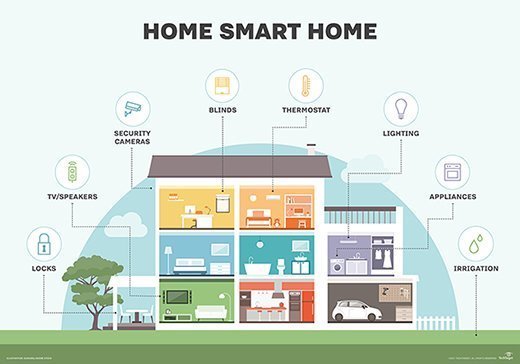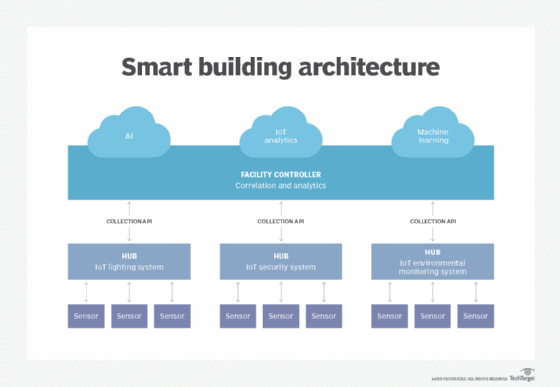Is Your Home Truly Smart Enough? Exploring the Full Potential of Smart Home Automation
Dec 12, 2024Uncover the full potential of smart home automation and find out if your home is truly smart enough with insights on advanced features, benefits, and optimization tips.
Is Your Home Truly Smart Enough? Exploring the Full Potential of Smart Home Automation
Smart home automation is rapidly transforming how we live, offering benefits beyond simple energy savings. It promises an automated and interconnected future where devices work harmoniously to anticipate our needs and improve our lives. This article explores the key aspects of smart home automation, examining its capabilities and potential impact
The AI Factor
Artificial intelligence (AI) is a crucial element driving smart home evolution. Voice assistants like Alexa and Siri are becoming increasingly intuitive, learning user behavior to personalize automated routines. This allows for customized experiences, from adjusting thermostats to ordering groceries, enhancing convenience and streamlining tasks. The increasing adoption of Internet of Things (IoT) devices is fueled by AI's ability to make smart home automation more user-friendly and intuitive. Parks Associates research indicates that the average U.S. household in 2023 possessed 17 connected devices, highlighting the growing market and the need for manufacturers to build consumer trust through seamless integration and user-friendly solutions.
Smart Lighting: Illuminating a Healthier Lifestyle
Smart lighting is a rapidly expanding sector of the smart home market, valued at over $15 billion worldwide in 2022 and projected to grow significantly. Manufacturers are incorporating features like circadian rhythm synchronization and color temperature adjustment to mimic natural light patterns. This contributes to improved sleep quality and productivity while simultaneously reducing energy consumption through brightness adjustments based on time and preference. To optimize your lighting, identify the wattage of your bulbs to choose the right dimmer and determine which lights only need a basic on/off switch to become smart.
Connectivity and Security: Staying Connected and Protected
Building consumer trust requires prioritizing data privacy and security. Many smart devices rely on cloud servers, raising concerns about data collection and potential breaches. However, some devices utilize encrypted connections, and those designed for local operation add an extra layer of protection by functioning without external data transfers. The most effective security measure is often to minimize data collection; some companies, for example, only require an email address for cloud service access. IoT devices can enhance home security through customizable scenes integrating smart locks, cameras, and motion sensors. Features like "away mode" can lock doors, arm security systems, lower blinds, and activate lights to deter intruders.

Convenient Sustainability: Energy Efficiency and Environmental Impact
With rising energy costs and environmental concerns, consumers are increasingly focused on sustainability. Energy meters and power measurement devices provide real-time monitoring and management of energy consumption, offering insights into usage patterns. Smart home automation contributes to broader community and environmental goals beyond individual energy savings. Government incentives for energy-efficient installations can encourage wider adoption and collective reduction in energy consumption. Intelligent IoT devices at the point of control offer adaptability and future-proofing for long-term sustainability.

Interoperability in a Smart Ecosystem: Seamless Integration
A key trend is interoperability, enabling seamless integration between devices and platforms. Manufacturers are collaborating to establish common standards, allowing devices to communicate effectively. This enhances user experience and fosters innovation. Customizable scenes can integrate various devices, such as adjusting temperature and ventilation based on time or preference, creating personalized routines for tasks like waking up.

PCMag's Guide to the Best Smart Home Devices
PCMag provides detailed reviews and comparisons of various smart home devices categorized by room (front yard, living room, kitchen, bedroom, home gym, garage, backyard). They offer recommendations for various budgets and needs, including smart speakers, displays, lighting, thermostats, security systems, cameras, appliances, and outdoor equipment. The reviews include ratings, pricing, and links to purchase.

Security.org's Guide to Home Automation
Security.org offers a comprehensive guide to home automation, explaining its functionality, components, and security considerations. They discuss the differences between IoT devices and home automation, outlining the various control protocols (Wi-Fi, Z-Wave, Zigbee, Bluetooth, Matter) and the importance of securing IoT devices. The guide also includes a buying guide, covering popular devices and features like remote control, voice assistants, geofencing, and IFTTT integration.
TechTarget's Overview of Smart Homes and Buildings
TechTarget provides a definition of smart homes and buildings, explaining how the technology works and its various applications. They discuss the advantages (convenience, security, efficiency, cost savings) and disadvantages (internet dependency, complexity, security risks, privacy concerns, cost) of smart home technology. The article also covers different communication protocols (Wi-Fi, Bluetooth, Zigbee, Z-Wave, Matter) and steps for setting up a smart home.

Reddit Discussion on Smart Home Quality of Life
A Reddit thread discusses whether smart homes genuinely improve quality of life. Responses highlight the peace of mind provided by features like automated security measures and remote control of devices. The discussion also touches upon the fun aspect of creating and customizing smart home systems.
Investopedia's Definition of a Smart Home
Investopedia defines a smart home as a convenient setup where appliances and devices are automatically or remotely controlled via an internet connection using a mobile or networked device. The article details how smart homes work, different system types (wireless and hardwired), components (heating, lighting, audio/visual, security, other), advantages (convenience, enhanced security, cost savings), and disadvantages (security risks, cost, learning curve). It also discusses the cost of smart home installation and provides examples of affordable smart home products.
:max_bytes(150000):strip_icc():format(webp)/smart-home.asp-final-5de0da3d6d8a474f9028d26c957255fe.png)
This comprehensive overview of smart home automation highlights its potential to enhance daily life, improve security, and promote sustainability. However, it also underscores the importance of addressing security and privacy concerns to ensure a safe and beneficial user experience.
New Smart Home Security Seal
Published Jan 22, 2025
The U.S. government introduces a new smart home security seal, the U.S. Cyber Trust Mark, to help consumers identify devices meeting robust cybersecurity standards. This label will appear on various internet-connected devices, providing a visible indication of device security....
DEEBOT T20 Review: The Future of Automated Home Cleaning
Published Jan 22, 2025
The DEEBOT T20 is a revolutionary robot vacuum with advanced mopping, hot water cleaning, and auto-lifting mop pads. Experience the future of home cleaning with its powerful suction and smart navigation....
The Future of Smart Homes with Apple Intelligence
Published Jan 21, 2025
Explore the future of smart homes with Apple Intelligence, homeOS, and new devices. Discover how Apple is transforming connected living with AI-powered experiences....